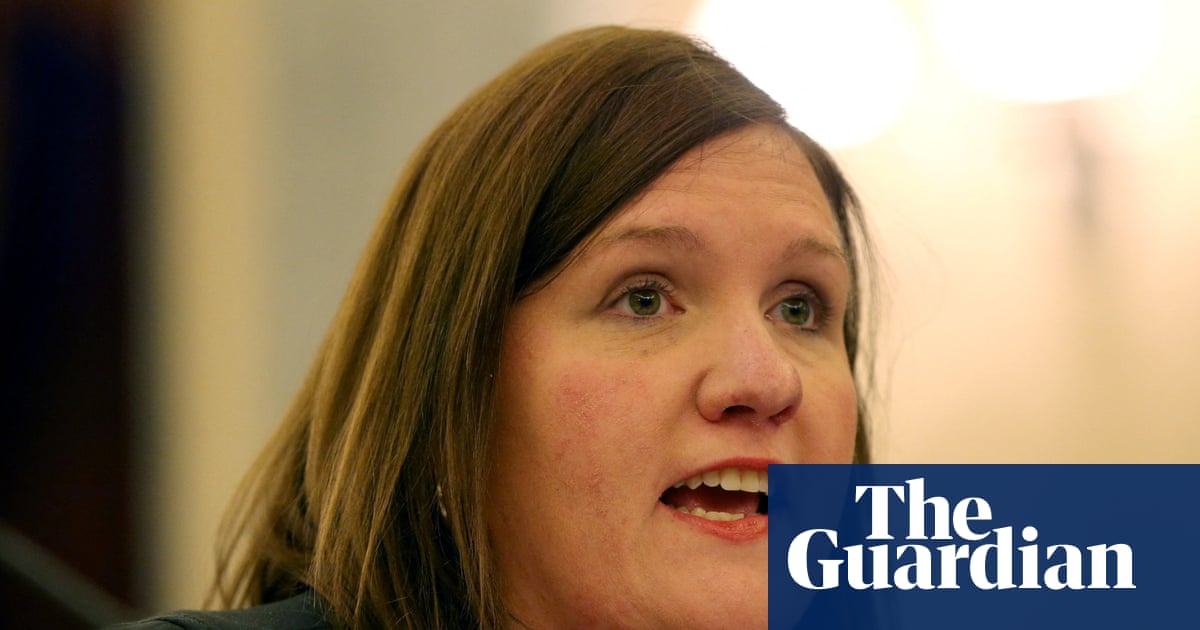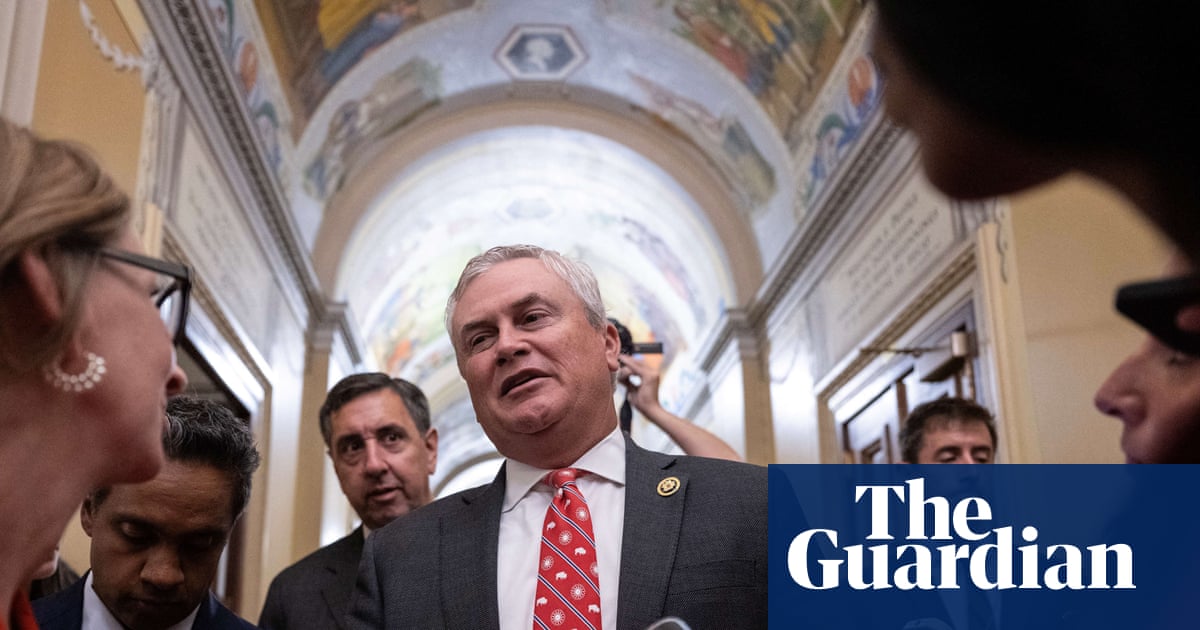In the fast-escalating national arms race over redistricting, Utah has emerged as an unexpected and potentially pivotal battleground.
The campaign began in Texas, where Donald Trump openly declared he was “entitled to” five additional Republican House seats. It quickly expanded to California, where Democratic lawmakers are asking voters to retaliate with new congressional maps drawn to “neutralize” Texas.
At least half a dozen other states have been recruited into what has is now an unprecedented push to redraw their congressional boundaries in ways that could lock in political advantage ahead of next year’s midterms.
The president has been candid about his aims: to safeguard Republicans’ fragile hold on the House. A loss of the speaker’s gavel would derail Trump’s legislative ambitions in the second half of his term – and open the door to a wave of investigations, from his administration’s handling of the Jeffrey Epstein files to its mass detention and deportation policies.
Deeply conservative Utah, by contrast, has been pulled into the redistricting fray not by the president but by a judge.
This week, Judge Dianna Gibson tossed out Utah’s current congressional map and gave the Republican-led state legislature until 24 September to submit a new one.
The existing boundaries fracture Salt Lake City – a splash of blue in a sea of red – across all four congressional districts, effectively diluting Democrats’ political influence. A redrawn map could consolidate more of Utah’s capital city into one district, giving Democrats a rare opening in one of the nation’s most reliably Republican states.
“There’s no doubt that any map that complies with this ruling would be more competitive than the current map,” said David Wasserman, senior editor and elections analyst at the non-partisan Cook Political Report. But he cautioned that lawmakers could still carve up Salt Lake City in ways that would maintain a Republican edge.
On Friday, lawyers for the Utah legislature asked Gibson to pause her gerrymandering order to allow time for lawmakers to appeal the decision to the state supreme court, according to local news reports. The request comes a day after the state’s Republican legislative leaders said they would comply with the ruling, which they denounced as “misguided” and “unreasonable” given the 30-day deadline.
“While we will continue to pursue every legal option available – including requesting a stay from the Utah Supreme Court if necessary – we will attempt to redistrict under these unprecedented constraints, consistent with our oath to represent the best interests of Utah,” the state house speaker, Mike Schultz, and senate president J Stuart Adams, said in a statement.
The ruling in the Utah case stems from a yearslong legal battle over Proposition 4, a ballot initiative narrowly passed by voters in 2018 that aimed to ban partisan gerrymandering through the creation of an independent redistricting commission. Although the Republican-controlled legislature weakened the commission and enacted its own map, the state supreme court – made up of five justices all appointed by Republican governors – ruled last year that lawmakers had probably overstepped, paving the way for this week’s decision.
Mark Gaber, an attorney representing the groups challenging Utah’s congressional maps, called the ruling a “vindication of a fair and neutral process”.
“The voters passed this in 2018 to effectively ban partisan gerrymandering and now we’re seeing a push across the country to gerrymander,” he said. “It’s nice to see this standing out as a shining example of a process that can work.”
Mid-decade redistricting on this scale is extraordinary. Typically states draw new congressional maps at the start of each decade following the census to account for population shifts.
At stake is the balance of power in Congress, where the president’s party typically loses ground in midterm elections. House Democrats need to flip only a handful of seats to retake the majority, and early signs point in their favor: Trump’s approval ratings are low and falling, and since his return to the White House, Democrats have outperformed expectations in a series of low-turnout contests from Florida to Iowa.
In a tit-for-tat redistricting fight, political analysts and experts say Republicans still hold the advantage: they control more state legislatures and have fewer constraints on gerrymandering.
Yet the Texas plan, which was signed into law on Friday by the state’s governor, Greg Abbott, faces multiple lawsuits, including one alleging that the new districts are racially discriminatory. In California, Republicans have asked the state supreme court to block the proposed countermeasure from reaching the ballot. And even seats drawn to favor one party can become competitive depending on candidate quality, voter turnout and the national mood.
In a closely fought election, even a single seat could tip the balance of power, making the prospect of a no Democratic pickup in Utah all the more worrying for the president.
On Wednesday night, Trump called the Utah decision “absolutely unconstitutional”.
“How did such a wonderful Republican State like Utah, which I won in every Election, end up with so many Radical Left Judges?” Trump wrote on Truth Social. “All Citizens of Utah should be outraged at their activist Judiciary, which wants to take away our Congressional advantage, and will do everything possible to do so.”
Gibson, the judge, was appointed to the district court in 2018 by the then governor Gary Herbert, a Republican.
Trump continued, urging Republicans in Utah to “stay united” and ensure the state’s “four terrific Republican Congressmen stay right where they are!” (One of Utah’s four House members, Celeste Maloy, is a woman.)
Trump’s outrage over the Utah ruling is a reminder, experts say, that courts – and voters – also have a say in shaping the political map.
Kareem Crayton, the vice-president of the Brennan Center for Justice’s Washington DC office and a leading expert on redistricting, said the Utah ruling “achieves something closer to redistricting with guardrails” – in stark contrast to what is unfolding elsewhere.
The lurch toward maximalist gerrymandering underlines the need for national standards, long sought by advocates of less partisan maps, Crayton said, but for now the message from the White House is: “Do more of it.”
“This system is broken,” he said. “It’s a broken one when the outcome of the people’s house – the one that’s actually supposed to be the most representative of the public – turns out to be the least representative because people are going back to the maps multiple times and, with no abandon, with respect to partisanship, drawing districts that choose their voters and not the other way around.”

 German (DE)
German (DE)  English (US)
English (US)  Spanish (ES)
Spanish (ES)  French (FR)
French (FR)  Hindi (IN)
Hindi (IN)  Italian (IT)
Italian (IT)  Russian (RU)
Russian (RU)  1 day ago
1 day ago
























Comments